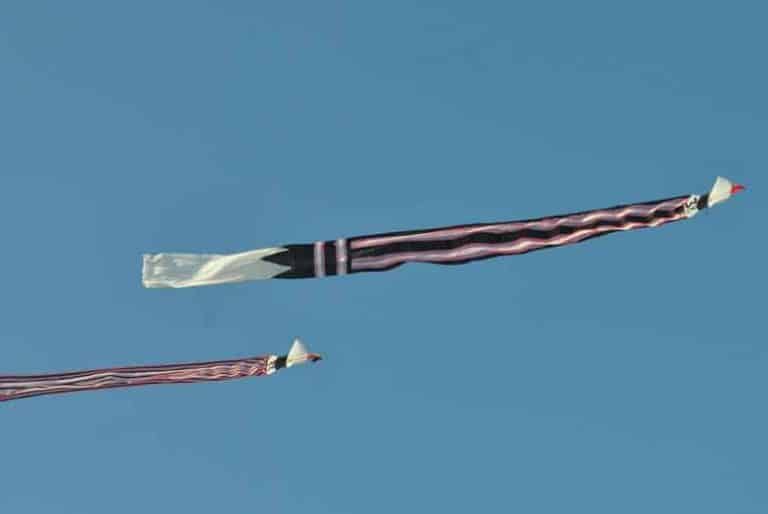Where Were Kites Invented: Origins of Aerial Play
Kites are believed to have originated in China nearly 3,000 years ago. The region provided the perfect materials for kite making: silk fabric for the sails, fine silk for flying lines, and strong, lightweight bamboo for framing. Chinese innovators harnessed these local resources to develop the first known kites, which quickly transcended mere playthings to serve vital military functions.
The earliest Chinese kites, documented as flat and often rectangular, served not only in recreation but also in military applications, including signaling and measuring distances.
Kites were an integral part of Chinese culture and technology, evolving over time to take on numerous forms and functions, from symbolic and ceremonial uses to scientific and technological purposes.
Key Takeaways
- Kites were invented in China around 3,000 years ago.
- Early kites were made of silk and bamboo and used for military purposes.
- The evolution of kites included roles as cultural symbols, and their advancements influenced various aspects of technology.
Origins and Early History of Kites
The invention of kites is deeply rooted in ancient Chinese culture, with key historical figures and materials playing pivotal roles in their development and evolution.
Invention in Ancient China
Kites are believed to have originated in China more than 2,000 years ago. This region had a plethora of resources conducive to kite making, including silk for the sail, high-tensile silk string for line, and lightweight, robust bamboo for frames. These materials afforded the Chinese the ability to craft durable kites capable of flying in various weather conditions.
Mozi and Lu Ban
Historical texts attribute the creation of the first kites to the Chinese philosophers Mozi and Lu Ban. Mozi lived in the 5th century BC and his writings are some of the earliest to describe kites. Lu Ban, a contemporary of Mozi, was also credited with the invention of the kite. These two figures are often revered as icons in kite history for their early contributions to the design and development of kites.
Han Dynasty and Beyond
During the Han Dynasty (206 BC – 220 AD), kites transitioned from being used for practical purposes to leisure activities. It was during this era that paper kites became prevalent, marking a significant evolution from the rudimentary silk and bamboo designs. Over time, kites became woven into various aspects of Chinese culture, from religious ceremonies to military applications, expanding well beyond the borders of Asia and into the annals of global history.
Kites as Cultural Symbols and Tools
Kites, originating from China, have transcended their practical uses to become potent cultural symbols and tools in various Asian societies, each embedding its unique values, military applications, and festive significance into these flying marvels.
Religious Ceremonies and Festivals
In many Asian cultures, kites are more than just playthings; they hold spiritual significance and are prominent in religious ceremonies and festivals. Japan celebrates the New Year and Children’s Day with kites, whereas in India, festivals like Makar Sankranti are synonymous with vibrant kite-flying activities. These festivals not only showcase the beauty of kites but also embody hopes, dreams, and collective cultural expression.
Military Usage in the East
Historically, kites served as tactical tools in military operations. Most notably, General Han Hsin of ancient China used a kite to measure the distance between his army and the walls of an enemy city, orchestrating a successful tunnel invasion beneath. This strategic application of kites demonstrates their utility beyond recreation, marking their significance in eastern combat and strategy.
Spread to India, Korea, and Japan
The influence of kites spread from China to neighboring India, Korea, and Japan, adapting to each region’s cultural ethos. Artistic expression flourished as kites became canvases for calligraphy and paintings.
In Korea, kite-flying is associated with the first full moon of the lunar new year, while in Japan, Edo kites with intricate designs serve a cultural purpose during festivities. India’s kite-flying is not just a pastime but a competitive sport, reflecting the vibrant ethos of its people.
Through these various uses and adaptations, kites have woven themselves into the cultural tapestries of these societies, showcasing the dynamic ways a simple invention can soar to become a profound token of heritage and pride.
Technological Innovations and Kite Advancements
Throughout history, kites have evolved from basic designs using natural materials to complex structures influencing aeronautics and aviation. This section explores pivotal innovations in materials and the relationship between kite flying and early aircraft development.
From Natural Materials to Synthetic
In the early days of kite making, builders relied on natural materials such as silk, bamboo, and paper. These materials, while widely available, had limitations in durability and performance. Over time, the progress in synthetics revolutionized kites.
Ripstop nylon, a lightweight and strong fabric, became a preferred material, offering greater resilience and control, significantly enhancing flight characteristics.
As kite designs advanced, so did their applications. The box kite, for example, marked a significant step forward. It showcased a durable and stable frame, which enabled meteorologists and aeronautical experiments to reach new heights.
Birth of Aeronautics and Influence on Aviation
Kites played an instrumental role in the birth of aeronautics. Benjamin Franklin’s famous kite experiment, using a simple flat kite to demonstrate the electrical nature of lightning, linked kites to the field of electricity and scientific inquiry.
The Wright brothers, recognized for their pioneering efforts in aviation, utilized kite and glider experiments as building blocks for constructing the first powered airplane. Their work with man-lifting kites and gliders, around the turn of the 20th century, provided them with invaluable insights into control surfaces and aerodynamics. These experiments underpinned the core principles of aeronautics and influenced the early development of aviation.
Global Kite Expansion and Cultural Exchange
Kite flying, an invention with its roots in China, spread across the globe through various channels of cultural exchange and adaptation. The proliferation of kites has been marked by their integration into diverse cultural traditions and their utility in wartime efforts.
Marco Polo and The Introduction to the West
Marco Polo, one of the most famed European traders of the Middle East and Asia, is often credited with introducing the concept of kites to Europe after his travels to China. His detailed accounts of the kites he witnessed during the Yuan Dynasty illustrated their distinctive style and use, sparking interest and fascination among Europeans.
Kites During World Wars and Modern Uses
During World War I, kites served functional purposes such as enemy observation and were used by soldiers as a communication tool. The applications expanded in World War II to include target practice for anti-aircraft gunners.
Kite flying is now a popular recreational activity around the world, with numerous countries hosting annual kite festivals that showcase both traditional designs and innovative engineering feats.
Using kites in competition is also popular in many parts of the world today.
Final Thoughts
Hopefully I’ve satisfied your curiosity about the introduction and use of kites through the ages. If you liked this article, please share it with your friends and on social media.





